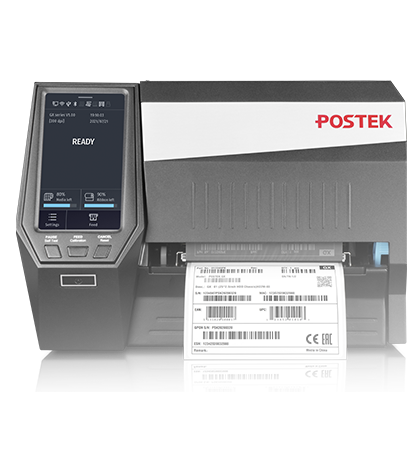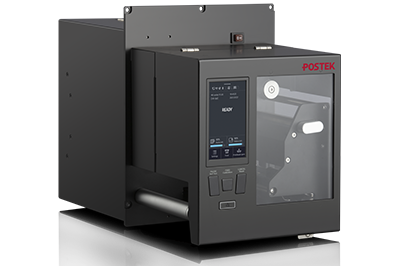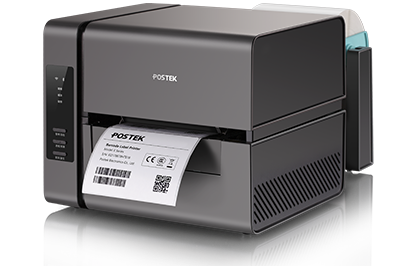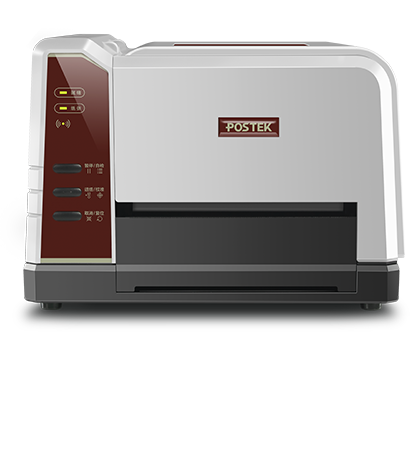







































In the contemporary era of accelerated technological advancement, the manufacturing industry is undergoing a profound transformation towards intelligent and efficient processes. Printing and labelling represent a pivotal link in the production chain, and are poised to undergo a significant evolution in line with the advent of new scientific and technological advancements.
Recently, POSTEK unveiled an intelligent printing and labelling robot, which represents a significant advancement over traditional printing and labelling machines. This article will elucidate the distinctive capabilities of this innovative technology.

1、Intelligent vs. Traditional
POSTEK Smart Print Labelling Robot
More Intelligent,More Efficient,More Secure.By combining intelligent label printers with universal IO and logic control interfaces with a collaborative robot (cobot), it is possible to create highly intelligent labelling systems.

Traditional Print and Labelling Machines
Pneumatic, servo or stepper motors drive the labelling head in three dimensions to achieve labelling.

2、Volume plummeted
Strength skyrocketed
[Traditional] Fixed design, complex structure, bulky and heavy
[POSTEK] Flexible design, compact and lightweight
Traditional Print and Labelling Machines are complex and large, occupying a lot of space and difficult to adapt. POSTEK Smart Print Labelling Robot combines printing and labelling in one compact, flexible machine that can be easily adapted to different production lines. Its compact design makes it easy to install and maintain. It can connect with many printers, including the MX, MX Pro, OX, and TX Exp (Max). This makes it a flexible solution for many printing challenges.

3、Intelligent control
Programming-free
[Traditional] Programming difficulty, low flexibility
[POSTEK] Highly intelligent, no need for professional programming
Traditional Print and Labelling Machines are limited to performing preset simple tasks with a narrow scope of application. POSTEK Smart Print Labelling Robot integrates diversified working modes and can adapt to the needs of various scenarios.
「Drag-and-drop teaching mode」
Fast and accurate labelling is easy to achieve without complex programming skills. The robot is equipped with an intelligent processing core that allows the user to set its path with a simple drag-and-drop, and the robot automatically executes the trajectory and precise labelling tasks according to the instructions.

「Automatic setting mode」
Suitable for large-scale and repetitive labelling tasks, it guarantees production efficiency and accuracy without human intervention. The robot automatically performs labelling tasks according to preset parameters and rules, which may include position, speed, force, etc., as well as special requirements for specific products or batches.

「Script programming mode」
Provides more advanced customisation capabilities for intelligent labelling robots. Users can write custom scripts using programming languages (e.g. Python, C++, etc.) to achieve more flexible and intelligent labelling operations through complex logic or specific algorithms.

4、Optimise customisation costs
Call at any time
[Traditional] Long cycle time, customised according to the production line
[POSTEK] For most labelling applications, ready to call
Traditional Print and Labelling Machines need to be customised according to the actual situation of each production line, long cycle, narrow scope of application. POSTEK Smart Print Labelling Robot can match most of the labelling applications, according to the production line at any time to call, greatly reducing the cost of customization, and instantly meet the labelling needs of various scenarios.

5、Minimalist design
Direct collaboration
[Traditional] PLC device for control
[POSTEK] Direct communication, no PLC required
Traditional Print and Labelling Machines rely on programmable logic controllers (PLCs) for operation, with extensive and complex wiring and connections, and are controlled through indirect communication, with a high risk of failure. POSTEK Smart Print Labelling Robots do not need to rely on external PLC equipment, and achieve seamless connection and direct control between intelligent printers and collaborative robots. Intelligent printing and labelling robot adopts a minimalist design, does not rely on compressed air and external complex wiring, is more affordable, easier to install, and brings a smoother, more stable, and more efficient operating environment for the production line.

6、All-round assistant
All-round labelling
[Traditional] Accuracy limited, single-side labelling
[POSTEK] Flexible labelling, multi-side accurate labelling
Traditional Print and Labelling Machines are limited by their mechanical structure. They can only move in one way, making multi-face labelling difficult. POSTEK Smart Print Labelling Robot can print and label seamlessly and accurately. The built-in sensors and visual recognition system can respond to different products and adjust the labelling position and angle automatically. The robot can also do multi-face labelling, which can meet different labelling needs, make the production process better and improve production efficiency.

7、Electricity control
Save effort
[Traditional] Relying on cylinders and motors, efficiency and speed are limited
[POSTEK] Printing and labelling are synchronised, and power control is more efficient
Traditional Print and Labelling Machines use a cylinder and motor that slow down the labelling process, limiting productivity and output speed. Compressed gas has a certain pressure, which can be dangerous. POSTEK Smart Print Labelling Robot uses low-voltage and low-current electronic control without compressed air. This speeds up the process and improves productivity. It is plug and play and safe and efficient.

8、Controlled risk
Upgraded security
[Traditional] Uncontrollable emergencies, safety hazards
[POSTEK] Intelligent collision protection, continuous safety and reliability
Traditional Print and Labelling Machines are bulky, in high-speed operation in the event of an unexpected situation (such as power failure), resulting in labeling arm expansion and contraction in a timely manner, inertia derailment and other uncontrollable situations, there is a great safety risk. POSTEK Smart Print Labelling Robot, as an advanced device designed for collaborative working environment, has a built-in collision protection function, which provides comprehensive protection for the operator and other objects, and raises the safety performance to a new height.

During operation, the robot is able to keenly sense external collisions. Once the collision force exceeds the preset safety threshold (this threshold can be adjusted by the collision level according to the actual demand), the robot will immediately respond by entering the category 2 stop state and stopping the movement to avoid injury or damage.
Highly intelligent, the robot automatically switches to drag-and-drop instructional mode. In this mode, the operator can easily drag the robot body to a relatively safe position, which provides great convenience for emergency handling and effectively reduces injuries to people, objects and the robot itself.

In case of resumption of operation, the operator can easily restore the robot's operating status by simply operating the teach pendant, without the need to rewrite complex programmes or carry out cumbersome settings. This greatly saves restarting time and significantly improves work efficiency.
The advent of the POSTEK intelligent printing and labelling robot marks a significant milestone in the evolution of intelligent technologies within the printing and labelling industry. The device incorporates innovative design, control, customisation, interaction, labelling accuracy, power and safety features, and other enhancements. It is anticipated that this technology will assist numerous enterprises in enhancing production efficiency, exercising reasonable cost control, and improving product quality. In the forthcoming evolution of the industry, it is hoped that this technology will facilitate the formation of a more dynamic and innovative printing and labelling industry ecosystem.